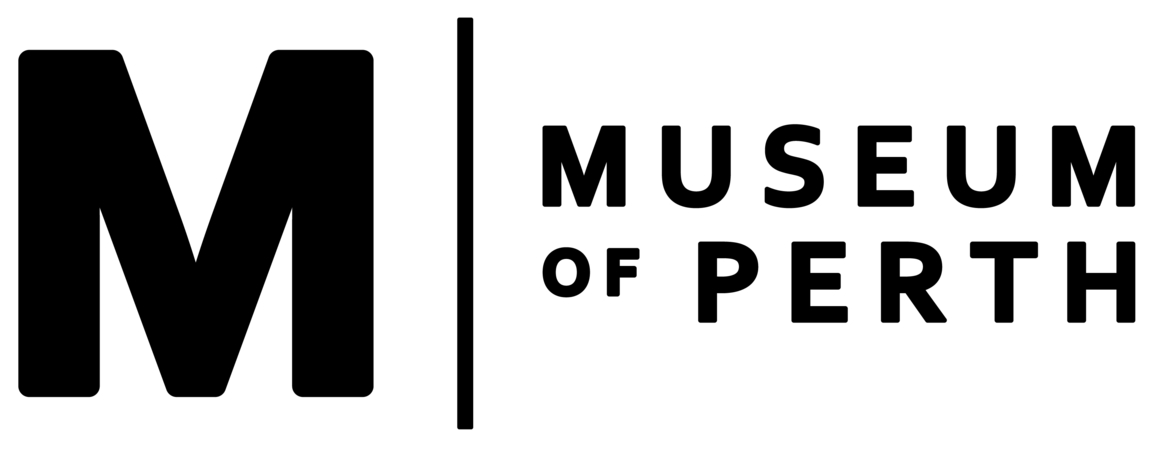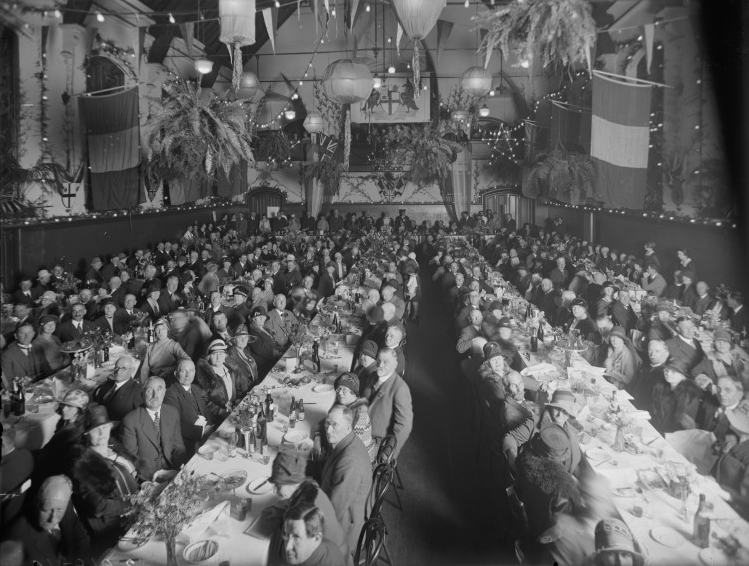1929 WA Centenary Celebrations
Marking the first 100 years since the establishment of the Swan River Colony and held in Perth between 28 September to 12 October, the 1929 Western Australian Centenary celebrations saw the city decorated in lights, with grand parades, marches, and festivities being staged to celebrate this milestone of Australia's largest state.
1929 artist's impression of Perth in 2029. (Supplied: Wikimedia Commons)
1929 in Western Australia was a time of great celebration as the state hosted a large number of events to mark the first centenary of the City of Perth and the establishment of the Swan River Colony in 1829.
On 12 August, prior to the commencement of celebrations a month later, then WA Governor Sir William Campion announced that Perth had been granted a Lord Mayoralty from King George V. A plaque was unveiled at Perth town hall and a luncheon was held inside to mark the occasion.
WA Governor Sir William Campion speaks to the crowd gathered at Perth Town Hall, 12 August 1929. (Supplied: State Library of Western Australia)
Celebratory luncheon inside Perth Town Hall, 12 August 1929. (Supplied: State Library of Western Australia)
The Perth Oval Clubhouse was commandeered by the occasion as its annual ball was converted into a much larger affair, held on the 13th of September. Officials and dignitaries packed the rooms as music and laughter flowed throughout the dance hall. Honoured guests included Governor Sir William Campion, Lord Mayor James T Franklin, and Perth Club Acting-President Mr Harry Boan, among several members of the defence force and other Perth City Councilors. Food and decorations were widely fawned over, as no expense had been spared for the occasion, with several shades of Icelandic poppies even being imported for the event.
"Colored lights here and there announced the centenary, and with the palms and flowers everywhere sounded a note of gaiety. In the main dance hall the ceiling was hidden by gaily-colored balloons, and dancers enjoyed music supplied by Sheridan's orchestra, established on the veranda, from where the music could be heard by all."
-The Daily News, 14 September 1929
Mrs Ida Green at the Perth Oval Centenary Ball, displaying typical fashion for the time, 13 September 1929. (Supplied: State Library of Western Australia)
A grand pageant was run on October 2nd, organised in partnership with the Historical Society of Western Australia, with help from the public in supplying vehicles and costumes for the period display pieces. Consisting of over 1000 people, and stretching to almost four kilometres long, the Centenary Pageant illustrated the history of the State, from pre-colonisation, to Australia's participation in the First World War.
With a procession of Aboriginal tribesmen leading the parade, many tableaux followed with different depictions of Western Australia's rich history. Volunteers dressed as colonial explorers such as Dirk Hartog, William Dampier, James Stirling and Charles Fremantle followed first, representing the establishment of the colony. The early development of the state was shown with carefully designed sections covering agriculture, printing, postal services, commerce, pastoral pursuits, railways, coal and gold mining, exploration, responsible Government, and Federation. Numerous groups depicting the evolution of fashion also followed.
Special sections were devoted to the Australian Army and Royal Australian Navy, with parts illustrating Australia's involvement in the Second Boer War, and the First World War.
One of the tableaux representing Aboriginal members of the Noongar people pre-colonisation, 2 October 1929. (Supplied: State Library of Western Australia)
Parade float displaying the "Spirit of Aviation" with scale models of famous aircraft of the time, 2 October 1929. (Supplied: State Library of Western Australia)
Centenary Pageant at Perth Oval, 2 October 1929. (Supplied: State Library of Western Australia)
Centenary Pageant on Hay Street, 2 October 1929. (Supplied: State Library of Western Australia)
Another large celebratory event, Western Australian Centenary Air Race, was held between Mascot, Sydney and Maylands, Perth from 29 September to 2 October. The race gained much media attention due to its perceived difficulty and scale, with almost 1000 aviation enthusiasts gathering in Kalgoorlie-Boulder to watch the final leg of the race commence. British pilot Hereward de Havilland, part of the legendary de Havilland family, won with a time of 22 hours, 50 minutes, and 23 seconds. The handicap race was won by Australian pilot Horace Clive "Horrie" Miller OBE. The handicap results were difficult to determine due to the many variables such as wind strength and direction, type of aircraft, as well as starting and stopping times for each leg.
Horrie Miller (right) and Jim Woods standing with MacRobertson Miller Aviation Lockheed DL-1A Vega Special passenger aircraft VH-UVK in front of hangar at Maylands Aerodrome, Perth. (Supplied: National Library of Australia)
Hereward de Havilland at Maylands Aerodrome after winning the fastest time prize. (Supplied: Wikimedia Commons)
"One of the most spectacular events in connection with the Western Australian Centenary is the proposed air contest between Sydney and Perth."
-Brisbane Daily Standard, 19 March 1929
Boans building illuminated at night for the celebrations. (Supplied: State Library of Western Australia)
Economics Stores building illuminated at night for the celebrations. (Supplied: State Library of Western Australia)
Perth Town Hall illuminated at night for the celebrations. (Supplied: State Library of Western Australia)













